I’m thrilled to share why Mannington Adura Max luxury vinyl plank flooring is a game-changer for any home. After installing it in my own space, I can tell you it’s durable, stunning, and practical for busy households.
Its realistic wood visuals, waterproof core, and easy maintenance make it a standout choice. Whether you’re a parent, pet owner, or just want a stylish, low-maintenance floor, Adura Max delivers.
Trust me, this flooring is worth every penny for transforming your home with ease and elegance.
My Journey With Mannington Adura Max
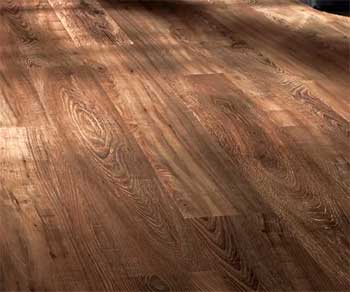
Let me take you back to last spring when I decided to overhaul my home’s flooring.
My living room, kitchen, and hallway were a mishmash of outdated carpet and chipped tiles—definitely not the vibe I was going for.
I wanted something durable enough to handle my two kids, a rambunctious golden retriever, and the occasional wine spill (guilty!).
After weeks of research, I landed on Mannington Adura Max, and let me tell you, it’s been a total win.
I chose the Adura Max in Nordic Oak for its warm, grayish-brown tones that screamed modern farmhouse chic. The installation process was a breeze—well, for the pros I hired, anyway. I watched them lay down the planks, and the click-lock system made it look effortless, like snapping together giant Legos.
What struck me immediately was how realistic the wood texture looked. It wasn’t that plasticky shine you sometimes get with cheap vinyl; it felt like I was walking on actual hardwood, but without the price tag or the stress of water damage.
Living with Adura Max has been a dream. My kids have dropped everything from juice cups to toy trucks, and the floor still looks pristine. The dog’s nails haven’t left a mark, which is a miracle compared to the scratched-up laminate I had before.
Spills?
I just wipe them up with a damp cloth, and I’m good to go. The floor’s sound-dampening feature is another unexpected perk—my house feels quieter, even with all the chaos. Honestly, choosing Adura Max was one of my best home decisions, and I’m excited to break down why it’s so awesome.
The Pros of Mannington Adura Max: Why It’s A Showstopper?
- Durability That Laughs at Chaos
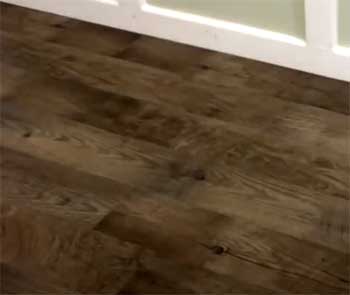
You know how life gets messy—kids, pets, and that one time you dropped a cast-iron skillet (just me?).
Adura Max is built to take a beating. Its 20-mil aluminum oxide wear layer is like a superhero shield against scratches and dents.
I’ve got a toddler who loves dragging toys across the floor, and there’s not a single visible scratch.
The rigid WPC (wood-plastic composite) core adds extra toughness, making it more resistant to indentations than many other vinyl floors.
It’s not just hype—this flooring holds up in high-traffic areas like my kitchen and hallway without breaking a sweat.
- Waterproof Wizardry
If you’ve ever panicked over a spilled glass of water on hardwood, you’ll love this. Adura Max’s HydroLoc waterproof core is 100% impervious to moisture. I tested this claim when my dog knocked over his water bowl, leaving a puddle for hours—no warping, no bubbling, no problem.
This makes it perfect for kitchens, bathrooms, or even basements. Unlike some competitors, the waterproofing extends to the edges, so liquids can’t sneak under the planks. You can install it in any room without worrying about spills or humidity ruining your investment.
- Realistic Visuals That Fool Everyone
I can’t tell you how many guests have complimented my “hardwood” floors, only to be shocked when I reveal it’s vinyl. Adura Max’s True Detail Styling nails the look of real wood or stone, with subtle textures and grain patterns that feel authentic underfoot.
With over 50 wood-look options and tile designs, there’s something for every style. My Nordic Oak has a weathered, natural vibe that elevates my space without looking fake. It’s like getting the beauty of hardwood without the maintenance headache.
- Easy Installation for DIY Warriors
I didn’t install the flooring myself, but I watched the process, and it’s DIY-friendly for those braver than me. The click-lock system means no glue or nails—just snap the planks together. It’s a floating floor, so it can go over most existing surfaces, like tile or concrete, as long as they’re flat.
My installers finished my 1,200-square-foot space in a day, and there was no mess or fuss. If you’re handy, you could save some cash by tackling it yourself with a few YouTube tutorials and some kneepads.
- Sound-Dampening Magic
One surprise I didn’t expect was how quiet Adura Max is. The attached underlayment pad reduces noise by up to 30%, which is a godsend in my two-story home. Before, every step echoed through the house, but now it’s like walking on a cloud.
This is especially great if you’ve got kids running around or a home office where you need some peace. The pad also adds a cushioned feel, making it comfier than hardwood or tile. It’s these little details that make Adura Max feel like a premium choice.
- Microban Protection for a Cleaner Home
Here’s a feature I didn’t know I needed: Microban antimicrobial protection. It’s built into the planks and fights 99% of bacteria, keeping your floors cleaner between moppings.
As a mom with a dog who loves rolling around, this gives me peace of mind. It’s not a substitute for cleaning, but it’s like an extra layer of defense against germs. This is especially clutch for households with kids or pets, where messes are just part of the deal.
The Not-So-Good Parts: Where Adura Max Falls Short?
- Sunlight Sensitivity Can Be a Bummer
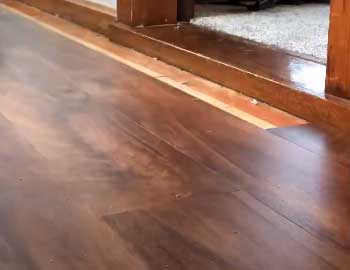
Okay, let’s be real—Adura Max isn’t perfect.
One issue I’ve noticed is its sensitivity to direct sunlight. In my sunroom, where the floor gets blasted with UV rays, I’ve seen slight fading over time.
Mannington warns about this, and I’ve learned my lesson: window treatments are a must.
If you’ve got big windows or a room with intense sunlight, you’ll need to invest in blinds or UV-blocking film to protect your investment. It’s not a dealbreaker, but it’s something to plan for.
- Scratches Happen (Sometimes)
While Adura Max’s ScratchResist technology is impressive, it’s not invincible. My floors have held up great against normal wear, but I’ve heard from others that heavy objects or sharp debris (like a pebble in a shoe) can leave marks.
In my case, I haven’t had major issues, but I’m careful about using felt pads under furniture and sweeping regularly. If you’ve got super rowdy pets or move furniture a lot, you might notice minor scratches over time. It’s still tougher than most, but don’t expect it to be bulletproof.
- Pricey Compared to Budget Options
Adura Max isn’t the cheapest vinyl out there. At $5 to $7 per square foot, it’s pricier than brands like Lifeproof from Home Depot, which can go for $3 per square foot. For my 1,200-square-foot project, the material cost alone was around $7,000, plus installation.
It’s a premium product, and you’re paying for the durability and aesthetics. If you’re on a tight budget, you might wince at the price tag, but I think the quality justifies it. Just be ready to shell out more than you would for basic vinyl.
- Color Batch Consistency Can Be Tricky
One hiccup I dodged but others have mentioned is color variation between batches. When I ordered my flooring, I made sure to get all the planks from the same dye lot to avoid mismatched shades.
Some folks online have complained about slight color differences if they buy from different batches. My advice? Double-check with your retailer to ensure everything matches before installation. It’s a minor hassle, but it can mess with the seamless look you’re going for.
- Customer Service Could Be Better
I haven’t had to deal with Mannington’s customer service myself, but I’ve read mixed reviews. Some homeowners felt brushed off when filing warranty claims for issues like fading or defects.
My experience has been smooth, but it’s worth noting that if something goes wrong, you might need to push hard for resolution. It’s not a widespread issue, but it’s something to keep in mind if you’re banking on stellar support.
Maintenance Tips To Keep Your Adura Max Floors Flawless
- Sweep or Vacuum Regularly
You don’t need to baby these floors, but a little TLC goes a long way. I sweep or vacuum mine a couple of times a week to keep dirt and grit at bay.
Those tiny particles can act like sandpaper if you let them build up. Use a soft-bristle broom or a vacuum without a beater bar to avoid scratches. I’ve got a cordless vacuum that makes this a quick task, and it keeps my floors looking brand-new.
- Damp Mop with the Right Cleaner
Cleaning Adura Max is a breeze, but you’ve got to use the right stuff. I stick to a pH-neutral cleaner recommended by Mannington—never bleach or vinegar, which can dull the finish.
I damp mop (never soaking wet) once a week, and it takes maybe 15 minutes for my whole downstairs. The Microban protection helps, but regular mopping keeps the floor sparkling. Pro tip: If you spill something sticky, wipe it up ASAP to avoid a mess.
- Steam Mopping Is A-OK
Good news—you can use a steam mop on Adura Max! I was skeptical at first, but Mannington gives it the green light. I use mine sparingly, maybe once a month, for a deep clean. Just keep the steam setting low and don’t let the mop sit in one spot too long.
It’s great for tackling stubborn grime, especially in my kitchen where cooking splatters happen. This is a huge plus compared to other floors that can’t handle steam.
- Protect Against Furniture Scratches
To keep scratches at bay, I put felt pads under all my furniture legs—chairs, tables, you name it. They’re cheap and make a big difference. I also avoid dragging heavy furniture across the floor; instead, I lift or use furniture sliders.
If you’ve got a dining room or office with lots of chair movement, this is a must. It’s a small habit that keeps your floors pristine for years.
- Use the Right Rugs
I love area rugs for adding warmth, but I learned to avoid rubber- or latex-backed ones. They can react with the vinyl and cause discoloration. I stick to rugs with natural fiber backings and move them occasionally to prevent prolonged contact.
Doormats at entrances are also key to trap dirt before it hits your floors. I’ve got a cute jute-backed rug in my entryway that does the job and looks stylish.
- Shield from Sunlight
To prevent fading, I’ve added UV-blocking blinds in my sunroom, and they’ve made a huge difference. If you’ve got rooms with lots of natural light, consider curtains, shades, or even UV window film. It’s an extra step, but it protects your investment and keeps the colors vibrant.
I check my floors every few months for any signs of fading, but so far, they’re holding up great with this precaution.
Comparing Adura Max To Other Brands: How It Stacks Up?
When I was in the thick of my research, my living room floor was a patchwork of samples from different brands. It’s one thing to see them online, but it’s another to lay them side-by-side in your home’s natural light.
This process was crucial for me, as it revealed the subtle but important differences between the top contenders. Here’s a more direct look at how I felt Mannington Adura Max stacked up against some other popular and respected brands I seriously considered.
- Adura Max Vs. MSI Everlife LVT
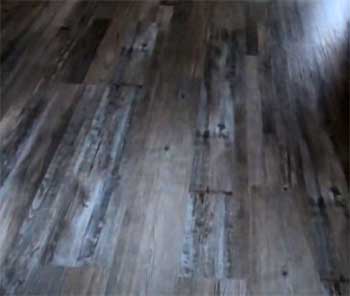
MSI is a huge name in the flooring and surfaces world.
You’ll find their Everlife Luxury Vinyl Tile collection in big-box stores and local flooring retailers alike, making it one of the most visible and accessible options on the market.
Their main appeal is a massive selection and very competitive pricing, which is what drew me to them initially.
When I put an MSI Everlife plank next to my Adura Max sample, the first thing I noticed was the core. Most of MSI’s popular lines, like their Cyrus and Prescott series, feature an SPC (Stone Polymer Composite) core.
This makes the planks incredibly rigid and dense. The benefit here is superior dent resistance. If you were to drop a heavy pan, an SPC floor like MSI’s would likely fare better against denting than a WPC floor.
However, the tradeoff is in the underfoot feel. The MSI plank felt harder and transmitted more sound when I tapped on it—it had more of that characteristic “clicky” sound of a hard floor.
In contrast, the WPC (Wood Polymer Composite) core of my Adura Max felt different. It has a slight give, a subtle softness that makes it more comfortable to stand on for long periods.
This, combined with its attached Ultra-Quiet pad, made it noticeably quieter. For a living space where comfort and acoustics were high on my list, Adura Max had a clear advantage.
Then there’s the wear layer. MSI’s Prescott line boasts a 20 MIL wear layer, which is on par with Adura Max and is considered excellent for residential use. But Mannington’s proprietary ScratchResist with aluminum oxide finish just felt tougher in my informal “key scratch test” on the back of the samples.
Aesthetically, MSI offers a staggering number of colors and patterns. But I found that some of their patterns had more obvious repeats, whereas the Adura Max planks had a more subtle variation and a more convincing, low-lustre finish that truly mimicked oiled hardwood.
For me, Adura Max justified its higher price with superior comfort, acoustics, and a more premium, realistic finish.
- Adura Max Vs. Kahrs Luxury Vinyl
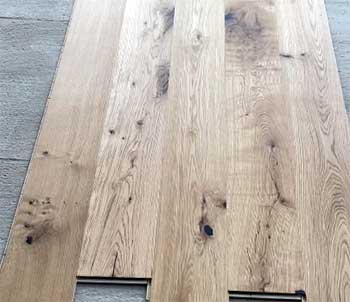
Kahrs is a Swedish company with a stellar reputation, primarily built on its beautifully designed engineered hardwood flooring.
Their foray into luxury vinyl carries that same Scandinavian design-forward philosophy.
This was a brand I was excited to check out, as I love that clean, minimalist, and natural aesthetic.
Comparing Kahrs LVT to Adura Max was a battle of design and feel. Structurally, many of Kahrs’ LVT lines are similar to MSI’s, featuring a rigid SPC core and a built-in sound-dampening underlayment. They are exceptionally well-made and durable.
The primary distinction is their design language. Kahrs excels at producing incredibly realistic European oak and ash visuals. The colors are subtle, the grain patterns are sophisticated, and they look and feel like a premium product. If your design goal is purely modern or Scandinavian, Kahrs is a formidable choice.
However, where Adura Max pulled ahead for my needs was in its versatility and its WPC core. While Kahrs’ designs are beautiful, they are also somewhat specific. Mannington offers a much broader aesthetic palette, from the rustic, hand-scraped look we wanted to more traditional and exotic wood species. It simply gave me more options to match my home’s existing character.
Furthermore, the comfort factor of Adura Max’s WPC core came into play again. While the Kahrs SPC floor is high-quality and quiet for an SPC, it didn’t have that slight softness and warmth that I fell in love with from the Adura Max. It felt like a decision between a top-tier European sedan (Kahrs) and a top-tier luxury SUV (Adura Max).
Both are premium and perform exceptionally, but one is built for crisp handling and style, while the other is built for all-around comfort and capability. For my family’s everyday life, the comfort-oriented approach of Adura Max won out.
- Adura Max Vs. Stuga Engineered Hardwood

This comparison is a little different, as it pits the best of LVP against a different product category altogether. Stuga is a direct-to-consumer company that has gained a massive following for its beautiful, curated collection of engineered hardwood floors.
For a while, I was truly torn: should I go for the ultimate in LVP durability or the undeniable authenticity of real wood from a brand like Stuga?
Stuga’s product is, without question, gorgeous. It’s a layer of real European oak over a stable plywood core. The appeal is obvious: you get the real texture, smell, and visual depth of wood because it is wood.
No LVP, no matter how good, can perfectly replicate the unique grain of a real wood plank. Stuga also simplifies the buying process with their online, sample-based model, which is very appealing.
The deciding factor, however, came down to one word: lifestyle. With two young kids and a dog, our home is a high-traffic, high-spill zone. A Stuga floor, being real wood, is susceptible to scratches, dents, and water damage.
While it’s more stable than solid hardwood, a significant spill left unattended could still cause damage. It would have required more vigilance—more rugs, more coasters, more “be carefuls!”
This is where Adura Max presented a stress-free alternative. Its 100% waterproof construction means kitchen spills or wet paws are a non-issue. Its scratch resistance is in a completely different league.
I knew I could let my kids be kids and my dog be a dog without hovering over them, worried about the floor. I was choosing peace of mind over material purity.
While a part of me will always admire the authentic beauty of a Stuga floor, the practical, worry-free durability of Adura Max was the right, and ultimately better, choice for my family’s life right now. It gives me 95% of the aesthetic of real wood with 200% of the durability.
Frequently Asked Questions (FAQ)
It depends on your needs. Adura Max, with its WPC core, is thicker (8mm) and offers superior sound dampening (up to 30%) and cushioning, making it ideal for homes with kids or multi-story spaces. Adura Rigid, with its SPC (stone-plastic composite) core, is thinner (5.5mm) but more resistant to extreme temperatures and indentations, perfect for gyms or sunrooms. I chose Adura Max for its comfort and quietness, but if you need something ultra-tough for harsh climates, Rigid might edge out.
Nope, it doesn’t! Adura Max comes with a built-in underlayment pad, which saves you time and money during installation. This pad boosts comfort and reduces noise, so you’re good to go as long as your subfloor is flat. I didn’t need any extra underlayment, and my floors feel great underfoot.
Yes, you can! Mannington says steam mopping is safe for Adura Max, which is a huge plus. I use a low-steam setting once a month for a deep clean, and it works like a charm without damaging the finish. Just avoid high steam or letting the mop linger too long in one spot.
Absolutely. Mannington’s been in the game for over 100 years, and their Adura Max line is a testament to their quality. It’s durable, waterproof, and stylish, with features like Microban and ScratchResist that set it apart. While some folks have had issues with fading or customer service, my experience has been stellar, and most reviews praise its performance.
Conclusion: Why You Should Choose Mannington Adura Max?
I can’t recommend Mannington Adura Max enough. It’s transformed my home with its gorgeous, realistic visuals and unbeatable durability. From surviving my kids’ chaos to making cleanup a breeze, it’s the perfect blend of style and function.
If you want a floor that looks like hardwood, shrugs off spills, and stays quiet underfoot, Adura Max is your answer. Take the plunge—you’ll love how it elevates your space while handling life’s messes with ease.
